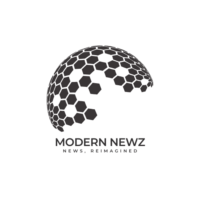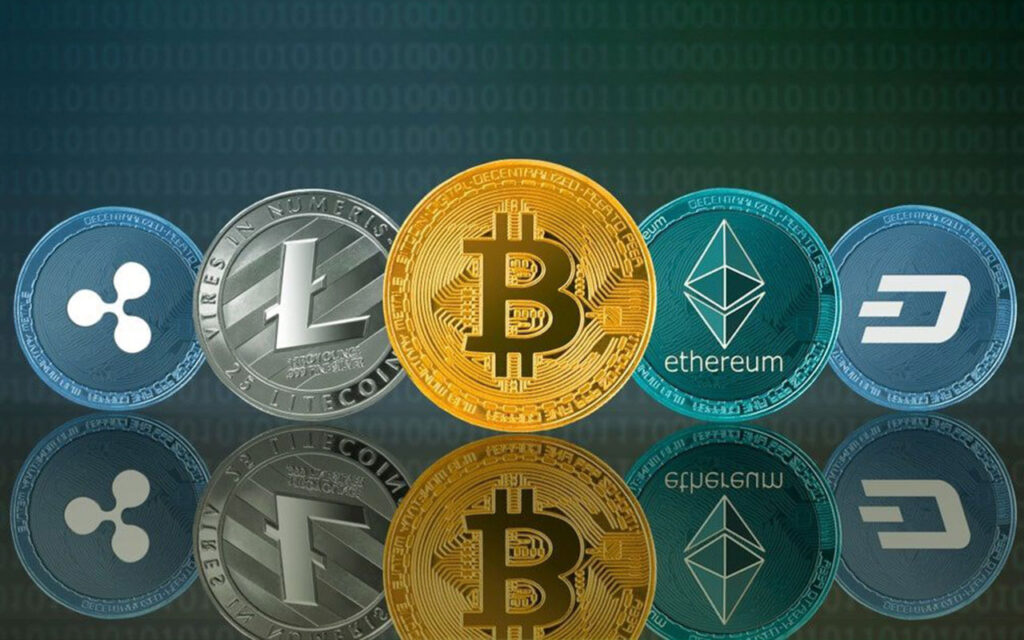More than 100 countries are researching central bank digital currencies right now. Blockchain technologies have grown way beyond their cryptocurrency origins and continue to evolve.
Bitcoin’s launch 15 years ago proved blockchain’s strength as a reliable technology to store value and ensure data remains unchanged. Ethereum made a huge leap forward by switching to proof of stake in September 2022. This change slashed its energy needs by more than 99%, showcasing blockchain’s remarkable progress.
Blockchain applications are expanding faster across finance, healthcare, gaming, and supply chain management. The growing job market for blockchain professionals makes this the right time to begin a journey into the field. This piece covers all the basics you need to know about getting started with blockchain in 2025.
Blockchain technology works as a distributed digital database that records transactions securely across a computer network. The technology uses a shared ledger where data blocks link together through cryptography. This makes the recorded information almost impossible to change.
Blockchain isn’t just the future—it’s the foundation of a decentralized, secure, and transparent digital world. Start learning today to shape tomorrow!
Bitcoin cryptocurrency introduced Distributed Ledger Technology (DLT), which has grown by a lot in the last decade. People often use both terms interchangeably, but DLT represents the broader technology while blockchain is just one application. The technology’s story began in the late 1970s with Ralph Merkle’s patented Hash trees. Stuart Haber and W. Scott Stornetta improved it in the 1990s to create systems that timestamp documents without tampering.
A blockchain network combines several vital parts that work together:
- Distributed Ledger: Works as a shared database where all participants keep similar copies of transaction records
- Smart Contracts: Programs on the blockchain that run automatically when specific conditions happen
- Nodes: Computers that store and verify transactions, each keeping a complete or partial copy of the blockchain
- Cryptographic Hash: A unique identifier that connects blocks and ensures data stays accurate in order
Transaction verification follows clear steps to stay secure and transparent. The network receives transaction broadcasts with details like sender and recipient wallet addresses, amount, and timestamp. These transactions group into blocks containing:
- Transaction details
- Timestamp
- Cryptographic hash of the previous block
Most network participants must agree on a transaction’s validity. The block joins the chain after verification and creates a permanent record. Each new block makes previous blocks more secure.
Blockchain networks can use different ways to reach agreement. Bitcoin uses Proof of Work (PoW) where miners solve complex math puzzles. Networks like Ethereum use Proof of Stake (PoS) that picks validators based on their cryptocurrency holdings. Blockchains can be public where anyone joins, or private where one organization controls access.
The technology’s permanent nature means no one can change or delete transactions after recording them. The distributed system also removes the need to spend time matching records. This makes blockchain a quick solution for many industries beyond cryptocurrency.
Setting up a blockchain environment needs you to think over many factors. The first step is choosing the right blockchain type that fits your needs.
Public blockchains let anyone join and take part in core network activities. These networks shine when it comes to decentralization and democratic operations. Private blockchains work differently – they limit access to selected users through invitations, making them perfect for business uses where controlled access matters most.
Private blockchains make a great starting point for beginners since they focus on efficiency and immutability rather than user anonymity. Permissioned blockchains blend features from both types and let you customize access levels for different users.
Your blockchain environment needs specific hardware to run properly:
- Minimum Requirements: At least 2 CPU cores and 4GB RAM works well for testing and simple development
- Production Environment: You’ll want 4 CPU cores and 8GB RAM to handle over 100 jobs
- Database Requirements: Large operations need 4 cores, 16GB RAM, and 100GB storage
Your software foundation should include:
- Operating System: Linux (best for production), MacOS, or Windows Subsystem for Linux
- Docker: You can’t run blockchain nodes without it
- PostgreSQL (version 12 or later)
High-speed processing and reliable storage capabilities will give you the best performance. Make sure to add redundancy systems that protect your data and build reliable infrastructure that grows as user demands increase.
Creating Your First Digital Wallet
Digital wallets act as your gateway to blockchain interactions. They help you store and manage cryptocurrencies safely. You can choose between two main wallet types:
Hosted Wallets: Third parties manage these wallets, which makes setup and recovery simple. Beginners love them because there’s no risk of losing access from forgotten passwords.
Self-Custody Wallets: These give you total control over your digital assets but you must manage private keys carefully. You get advanced features like yield farming and staking.
Learning Blockchain Development Fundamentals
- Two-factor authentication for better protection
- Regular wallet credential backups
- Private key storage in a secure place
- Security features
- User interface complexity
- Supported cryptocurrencies
- How well it works with other blockchain tools
Learning Blockchain Development Fundamentals
Becoming skilled at blockchain development requires you to understand three core components that are the foundations of this technology. These fundamental elements will shape your experience in blockchain development.
Understanding Smart Contracts
Smart contracts are self-executing programs on the blockchain that run automatically when specific conditions are met. These digital agreements cut out middlemen, which saves time and reduces fees. Smart contracts use simple “if/when…then…” statements coded on a blockchain, and a computer network executes actions after verifying preset conditions.
To name just one example, manufacturers can automate payments through smart contracts, which lets suppliers schedule shipments. But note that smart contracts use programming code instead of legal language – they’re just scripts that automate actions between parties.
Programming Languages for Blockchain Development
Each programming language for blockchain development brings its own strengths:
Solidity: Known as the most stable blockchain programming language globally, Solidity creates smart contracts for the Ethereum Virtual Machine (EVM). Its static typing supports flexible coding patterns and ensures precise smart contract creation between parties.
Python: Python works great for newcomers with its extensive libraries and clear syntax. Developers can access multiple tools and frameworks because it’s open-source, which cuts down development time. Built-in testing features make debugging faster, which helps in both blockchain and smart contract development.
Java: Java runs on any platform and handles complex Application Programming Interface (API) implementation. Multiple processes can run at once thanks to its multithreading capabilities, which optimizes CPU usage.
Development Tools and Frameworks
Blockchain development frameworks give developers the tools and libraries needed to streamline creation. These frameworks include:
- Pre-built functions and templates that speed up development cycles
- Tools that manage on-chain data effectively
- Testing environments for deploying smart contracts
- Security guidelines that protect against common vulnerabilities
Truffle stands out as a detailed Ethereum programming environment that makes smart contract compilation, deployment, and debugging easier through its command-line interface. The Remix IDE offers browser-based development support for creating and testing smart contracts.
MetaMask handles wallet integration with built-in security features like frontrun protection and Wallet Guard, helping millions of users worldwide. These tools combined with the right programming languages help developers build secure and efficient blockchain applications.
Building Your First Blockchain Project
Hands-on project work makes your blockchain experience more exciting. Picking the right project will help you understand blockchain basics better when you’re just getting started.
Simple Projects for Beginners
You can get practical blockchain experience through these beginner-friendly projects:
Cryptocurrency Wallet Development: Build a simple wallet application that lets users store and send digital currencies. This project introduces wallet addresses and transaction processes. You’ll learn these key concepts:
- Smart contract implementation
- Transaction validation
- User interface development
Decentralized Voting System: A transparent voting platform records votes securely on the blockchain. This shows blockchain’s power to keep data safe while stopping double voting or tampering.
Supply Chain Tracking: A system tracks products from start to finish. The application highlights blockchain’s strengths in:
- Checking if products are genuine
- Fighting fraud
- Supporting fair trade
Decentralized File Storage: A network spreads files across different nodes. This gives better security and reliability than old storage methods.
Testing and Deploying Your Application
Good testing will make your blockchain application secure and fast. Here are the key steps:
Development Environment Setup:
- Get Ganache to simulate local blockchain
- Set up Truffle Framework for smart contracts
- Add MetaMask for wallet features
Testing Procedures:
- Run full regression tests before going live
- Check smart contracts in different situations
- Test how the network handles transactions
Security Considerations:
- Add frontrun protection
- Turn on Wallet Guard
- Set up secure login methods
Deployment Strategy:
- Pick the right hosting based on what you need
- Build smart contracts and create bytecode
- Go live with secure wallet details
- Watch how contracts perform after launch
Keep development and production separate. This lets you test safely without putting real assets at risk. Once live, watch these things closely:
- Smart contract’s health
- Network connections
- Security weak spots
- User activity
Regular updates will fix problems and add new features throughout your application’s life. Blockchain developer groups on GitHub and StackExchange can help you solve problems together.
Exploring Career Opportunities in Blockchain
The blockchain job market is growing faster and creating opportunities in many industries. Organizations now embrace blockchain solutions more than ever. The average blockchain developer salary stands at USD 146,250 annually. Experienced professionals can earn up to USD 187,000.
In-Demand Blockchain Skills
A successful career in blockchain needs both technical and business skills. These core technical skills are essential:
Programming Proficiency: You need a strong command of C++, Python, Solidity, and JavaScript. Knowledge of distributed systems, cryptography, and smart contract programming will help you create secure blockchain applications.
Architecture Design: Blockchain architects should know how to design solutions and define infrastructure needs. They make strategic decisions about system implementation. Their focus stays on meeting non-functional requirements while keeping performance optimal.
Security Knowledge: Understanding cryptographic principles is vital to protect blockchain networks. This includes public-key cryptography, hash functions, and digital signatures. Security best practices prevent vulnerabilities and ensure strong system design.
Industries Adopting Blockchain Technologies
Several sectors now use blockchain solutions:
Financial Services: Banks and financial institutions use blockchain to streamline transactions. Settlement times are shorter and security is better. The technology makes capital access easier through peer-to-peer trading and reduces counterparty risks.
Healthcare: Medical institutions use blockchain to protect patient records and ensure data transparency. Patient data stays in a permanent, distributed ledger that authorized healthcare professionals can access.
Supply Chain: Trading companies improve their operational efficiency with blockchain. They manage trade finance better. Asset tracking becomes more accurate and transparent from source to consumer.
Government Services: Public sector organizations reduce costs and work more efficiently with blockchain. The Swedish land registry’s use of blockchain for land-title transfers has reduced transaction time by more than 90%.
Educational Paths and Certifications
You can choose different paths to become a blockchain professional:
Professional Certifications: Industry certifications verify your expertise and improve job prospects. Programs like Certified Enterprise Blockchain Professional (CEBP) add to your credibility.
Practical Experience: Open-source communities are a great way to get hands-on experience. You can download and modify blockchain code, create sample applications, and contribute to projects.
Specialized Training: Blockchain courses teach everything from cryptographic basics to decentralized application development. These programs include:
- Detailed knowledge of blockchain platforms
- Understanding of cryptocurrency operations
- Smart contract development skills
- Implementation techniques for blockchain applications
Your career growth depends on continuous learning as blockchain technology changes faster. Join developer communities, attend conferences, and stay updated with industry trends to remain relevant in this ever-changing field.
Conclusion
Blockchain technology is pioneering digital innovation and creates unprecedented opportunities in every industry. This piece covers everything in blockchain – from distributed ledger basics to the practical development skills you need to succeed.
Your blockchain experience begins with smart contracts, cryptographic principles, and consensus mechanisms. The right development tools and programming languages will help you build secure and efficient blockchain applications.
The career outlook looks bright as major industries adopt blockchain solutions. Financial services, healthcare, supply chain management, and government sectors show blockchain’s real value through better efficiency and security.
It’s worth mentioning that blockchain technology changes faster than ever. You can build expertise by following industry trends, joining developer communities, and working on real projects. Security and adaptable solutions should be your priority while you follow best practices in development and deployment.
Start small with your blockchain projects – build a simple cryptocurrency wallet or create a decentralized voting system. Every project adds to your portfolio and brings you closer to becoming a skilled blockchain professional.
FAQs
Q1. What are the essential steps to start learning blockchain as a beginner? To begin with blockchain, focus on understanding the technology’s fundamentals, learn programming languages like Solidity or Python, familiarize yourself with blockchain platforms, and start with simple projects like creating a basic cryptocurrency wallet or a decentralized voting system.
Q2. What skills are in high demand for blockchain careers in 2025? Key skills for blockchain careers include proficiency in programming languages like C++, Python, and Solidity, expertise in distributed systems and cryptography, smart contract development, and a strong understanding of blockchain architecture and security principles.
Q3. Which industries are actively adopting blockchain technology? Several industries are embracing blockchain, including financial services for streamlined transactions, healthcare for secure patient data management, supply chain for improved tracking and transparency, and government services for enhanced accountability and efficiency.
Q4. How can I gain practical experience in blockchain development? You can gain hands-on experience by participating in open-source blockchain projects, building sample applications, contributing to existing projects, and joining blockchain developer communities. Additionally, setting up your own blockchain environment and working on personal projects can provide valuable practical knowledge.
Q5. What are some beginner-friendly blockchain projects to start with? Some beginner-friendly projects include developing a basic cryptocurrency wallet, creating a decentralized voting system, building a simple supply chain tracking application, or designing a decentralized file storage system. These projects help solidify understanding of core blockchain concepts and provide practical development experience.





GetResponse is a game-changer for email marketing! It offers powerful automation, user-friendly tools, and excellent deliverability—making campaigns seamless and effective. Plus, their analytics help optimize performance effortlessly. Great news! Now you can get 30% off until April 5th. Perfect time to upgrade or try it out! 🚀 Follow the link.
Great insight! Managing cloud servers often seems complex, but Cloudways takes the stress out of the equation. Their platform delivers powerful performance without the usual technical headaches. It’s an ideal solution for those who want scalable hosting without getting lost in server configurations. Definitely worth checking out for a smoother hosting journey. Keep up the excellent work! Explore more through the link.
Looking for best amazon research tools? Here is the complete guide: https://bit.ly/Amz-Sales-Tool-Guide
Looking for best amazon research tools? Here is the complete guide: https://bit.ly/Amz-Sales-Tool-Guide
25 Easy Steps To Make Your Website Faster – https://digitalfinds.reviewfriendly.com/make-your-website-faster/